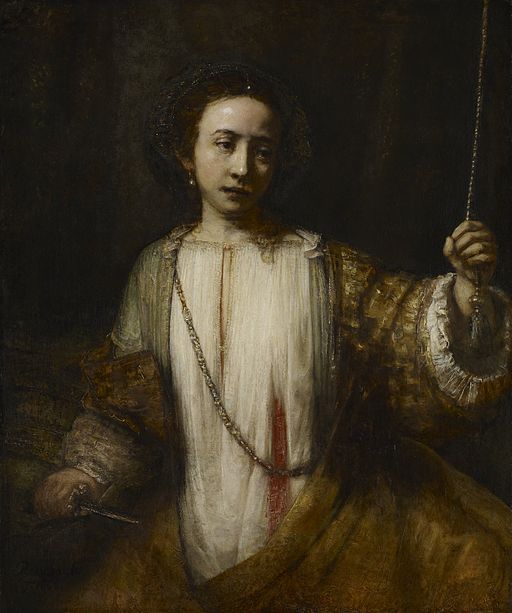Late Rembrandt in het Rijksmuseum. Dat betekent vooral veel mensen. Lange rijen bewonderaars, die weten dat ze hoog niveau (gaan) zien. Topniveau. En daarvoor wil iedereen wel wachten. De pr-machine heeft zijn werk gedaan en nu is het aansluiten in de lange rij en vervolgens schuifelen langs de vele blikken, rake lijnen en penseelstreken.
Rembrandt (1606-1669) legde in zijn talloze etsen en doeken peilloze diepten, in gedachten, ogen en gebaren. Er is veel licht, veel donker, veel suggestie. Zijn krachtige zelfportretten zetten de toon. Rembrandt beeldde zichzelf af zoals hij ook anderen schilderde. Hij kroop in hun gedachten. Legde veel suggestie in de inmiddels eeuwenoude verf, waarmee hij zijn tijd ver vooruit was. Maar bovenal kon hij zich ten diepste inleven in zijn geportretteerden. Hij wekte gestolde momenten tot leven.

Zoals het verhaal van de door een koningszoon verkrachte Lucretia, die zelfmoord pleegt. Haar blik is wellicht de meest intense van de hele tentoonstelling. Rembrandt begreep haar. En hij schilderde veel mensen, van wie hij ook de diepste zielenroerselen op het doek kreeg. Je ziet ze denken, twijfelen, worstelen.
Je ziet de tweestrijd van Batseba, nadat ze de brief van koning David heeft gekregen (topstuk uit het Louvre). Dat levert intens intieme taferelen op.
Er hangen meer topstukken, die vanuit de VS, Canada, Zweden, Groot-Brittannië, Frankrijk, Duitsland en zelfs uit Australië naar Amsterdam zijn gekomen. Allemaal verloren zonen, voor even terug. Jammer trouwens dat ‘De terugkeer van de verloren zoon’ uit de Hermitage in St. Petersburg (ook een late Rembrandt, immers) er niet bij is. Ook een doek vol zielennood.
Maar je kunt niet alles hebben en eigenlijk zijn deze meer dan honderd topstukken al meer dan een mens in een paar uur kan verwerken. Al deze indrukken zijn domweg teveel, zeker ook door de talloze etsen met hun grootse details. Die vragen aandacht en leiden vaak af van de immense doeken, die ook al zoveel inleving vragen. En geven. Maar wat geeft het. Ze zijn eindelijk weer thuis. Op een grote, grootse expositie.
